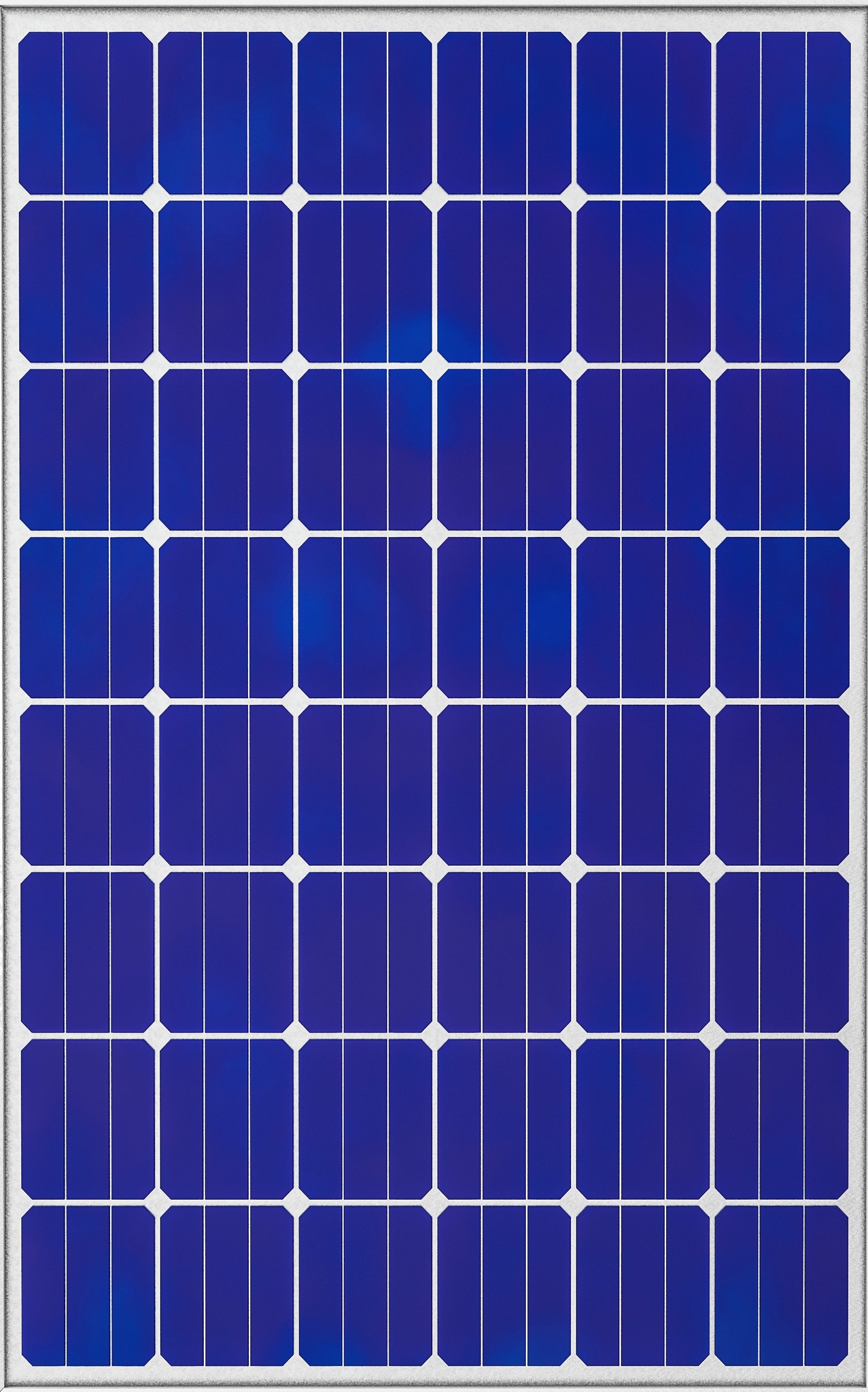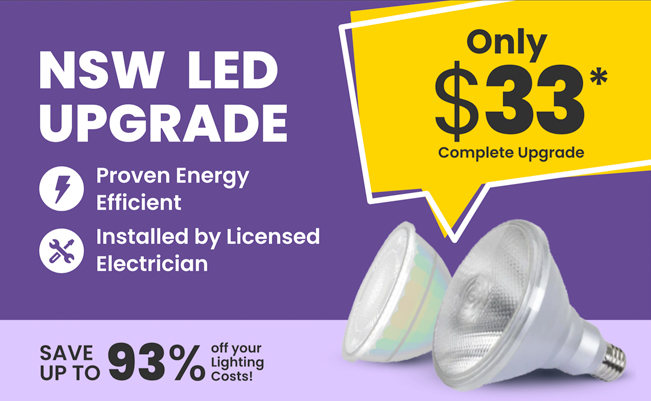The renewable energy market has recently shifted from a growing industry slowly gaining traction into a mature full-blown industry standing on its own.
Solar energy is one of the main green alternative energy sources that have successfully been harnessed. Others include wind, waves, and tidal production systems.
LET’S HELP YOU CHOOSE THE RIGHT SOLAR SYSTEM FOR YOUR HOME AND BUSINESS
Solar Solutions at Zero Cost: Government Rebated Installations! Invest in Sunshine with No Upfront Costs.
Direct solar energy that reaches the earth’s surface is harnessed in two ways namely: solar photovoltaics (solar PV) and solar thermal systems.
Understanding the differences between these two solar energy-harvesting techniques and the surrounding factors is essential to help you decide which system to adopt for your home or work.
What’s the difference between solar PV panels and solar thermal panels?
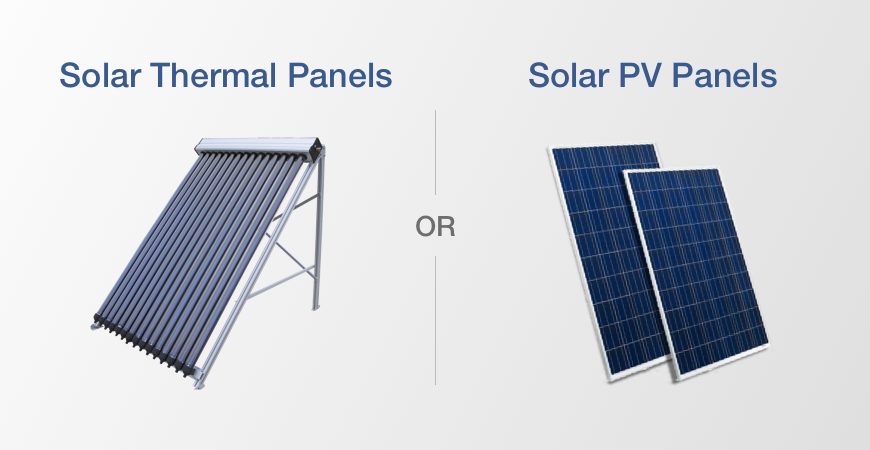
The main difference between the two systems is how they work.
Solar PV uses photovoltaic technology to capture the sun’s rays which it then converts to electricity. Solar thermal systems harness sunlight that is used to heat water or other fluids.
Solar thermal is used mainly for water heating where panels harness heat from the sunlight to heat the liquid in tubes,which is then transferred into cylinders.
Solar thermal panels
Advantages
- They are more efficient in collecting solar rays when compared to solar PV and it is estimated that they can achieve up to 70% efficiency.
- Solar thermal technology is relatively simple compared to solar PV which makes it easier to use.
- For water heating needs, solar thermal panels are a great solution.
- Considered in an investment and business context, solar thermal panels are a great value for money. They have an estimated average cost of $3903.

Disadvantages
- They are not as effective in low sunlight, for instance during winter, although this can be combated by using thermodynamic panels.
- Compared to solar PV panels, the solar thermal panels are less versatile and have shorter lifespans.
- It is also quite difficult to find a good supplier of solar thermal panels.
Solar PV panels
This system is typically an improvement on thermal solar systems. It is also available in a variety of panel sizes and types which allows for greater choice based on needs and budget. Sunlight that is harnessed is transformed into electricity that is readily available for use.
Why solar PV panels?
- They have a longer operating life which means you are guaranteed clean energy for at least 30 years.
- They are efficient and provide sufficient energy to meet most of the household demands. This is especially true during the summer when there is plenty of sunshine.
- Solar PV panels energy production is sufficient to meet high energy demands for appliances like dryers or refrigerators.
- Solar PV panels are widely available on the market for people to research and buy them. Furthermore, it is possible to get free solar pv panels for installation without incurring any costs.

Disadvantages
- They are quite costly especially at the initial stages of acquisition. In the United States, the average cost of a solar PV panel is $16,000.
- They use more space compared to solar thermal panels.
Conclusion
Both solar thermal panel and solar PV panel systems are great sources of green energy and the choice between them should be based on needs and circumstances, including a combination of one or more of the following factors: the availability of the technology, the amount of energy the house consumes, the energy needs of the house, and the budget available for investment.
Solar panels are touted as the main solution to climate change, and the amount of solar power harnessing has been growing exponentially globally. Below is Statista report on the cumulative installed solar PV capacity globally since the year 2000 in megawatts.

However, like any other revolutionary technology or idea, solar panels have a downside resulting from the several pieces and elements used for the construction of the panels.
Some parts that make up solar panels have been found, through testing, to be harmful to human health and the environment, especially at high levels. As a matter of fact, the United States Environmental Protection Agency (EPA) considers solar panel waste to be hazardous when in higher quantities.
Accordingly, owners should take careful measures to properly dispose of solar panels .
For instance, the EPA encourages people owning solar panels to reach out to their recycling facilities to get information on how to dispose of or recycle solar parts at the end of their life.
While such an approach may be considered effective, since it is not enforced and disposal measures aren’t readily available, encouragement does not guarantee long term success as people could easily choose to just dump the waste in the trash with other landfill waste.
LET’S HELP YOU CHOOSE THE RIGHT SOLAR SYSTEM FOR YOUR HOME AND BUSINESS
Solar Solutions at Zero Cost: Government Rebated Installations! Invest in Sunshine with No Upfront Costs.
Why should we worry about solar panels?
While solar panels are revolutionary in combating climate change, their use and effect at the end of their lifetime has not been adequately sorted. That is why panels quickly become a problem after they’re no longer in use.
Here are some interesting facts about solar panels to consider:
- Most solar panels last about 25 years after which they are decommissioned and end up as solar e-waste in landfills. Moreover, some solar panels are usually destroyed or damaged by harsh weather events before the end of their lifetime and also end up in landfills.
- Solar panels generate solar waste which cannot be recycled or recovered and to date, there is no readily available solution creating a huge problem.
- The final destination of this e-waste is generally a landfill which contributes to accumulation of toxic materials leaking out and the contribution to creating hazardous environmental hazards for living organisms.
- This issue has further social and health repercussions as some companies claim to export solar panel waste for reuse in developing countries, but this cannot be substantiated. Some of these countries are characterized by tame environmental laws, and make it easier to get away with dumping hazardous waste.
Is this a situation that can be salvaged?
Acknowledging the fact that solar panels will eventually no longer be in use is an important first step because it will eventually spark the discussion of how we can responsibly deal with, recycle, or reuse solar panels at the end of their usefule life.
One thing to consider is that the solar panels are made up of several constituent materials including crystalline silicon cells insulated on both sides by polymer and glass sheets and held together by a frame made of aluminum.
The panel also includes a junction box with copper wiring that channels the electricity generated to where it needs to be used.

This means that recycling solar panels can be achieved in a way that harnesses each of these elements separately and reuses or repurposes them appropriately.
As it is, most of the recycling of solar panels being done currently targets aluminum and copper and disregards the remaining parts.
The best part about adopting this approach to recycling solar panels is that it makes solar systems more profitable for individuals who recycle as one can earn more from the recycling of each part rather than just two or three bulk items.
From an environmental conservation perspective, being able to account for every part of the solar panel in recycling means there is less waste that goes to landfills, resulting in reduced toxins that cause hazardous environmental conditions.
What can we do to contain the toxicity?
The best strategy to combat solar panel toxicity is to reduce waste that ends up in landfills.
And the best way to do that is by encouraging the public and the manufacturers to adopt responsible recycling. This is initiated by having proper recycling procedures and destinations and communicating this effectively to the public.
It is necessary to invest in recycling of solar panels as a strategy to improve cost-to-revenue ratio.
Having well-equipped stations where the solar panels can be deposited to get stripped for constituent materials that are then separated, recycled, and reused is economically sound, apart from being a solution to the toxicity problem associated with them.
Investing in equipment and facilities that improve the recovery process and reduce the rate of waste production also decreases spending on securing new parts.
The other strategy that has worked successfully for other recycling initiatives is incentives. Formulating appealing incentives would encourage the public towards embracing responsible recycling of solar panels.
As an example, users could get paid to replace damaged or old solar panels or they could receive reduced prices on new solar panels if the old ones are handed in. Such initiatives could go a long way to reduce solar panels in landfills.
Conclusion
Solar panels can be toxic, but this largely depends on how they are disposed of after use. There is room for improvement with better education, efficient recycling processes, establishment of proper infrastructure, and incentives.
In recent years, Australia has emerged as a leading player in the global push towards sustainable energy solutions, with a remarkable surge in the adoption of solar panels.
As the sun-drenched continent embraces the power of renewables, the rise in solar installations is reshaping the energy landscape and setting new benchmarks for environmental stewardship.
This article dives into the factors fueling this solar revolution, supported by compelling research, data, and statistics.
TAKE ADVANTAGE OF GOVERNMENT SOLAR REBATES AND REDUCE YOUR HOME ENERGY CONSUMPTION!
Solar Power Made Affordable: Government Rebates, Zero Upfront Fees. Embrace a brighter future with solar power.
Harnessing the Power of the Southern Sun
Australia is blessed with abundant sunlight all throughout the year, making it a prime candidate for harnessing solar energy.
The vast expanses of the Outback, coupled with the sunny climates of cities like Sydney and Melbourne, have created an ideal environment for solar power generation.
According to data from the Australian Photovoltaic Institute (APVI), the country receives an average of 58 million PJ (petajoules) of solar energy annually, a small reference to the massive untapped potential waiting to be harnessed.
Government Initiatives and Incentives
The Australian government has played a pivotal role in steering the nation towards a cleaner, more sustainable energy future. Various incentives and initiatives have been introduced to encourage the adoption of solar technologies.
The most notable among these is the Small-scale Renewable Energy Scheme (SRES), which provides financial support to homeowners and businesses installing solar panels. The Australian Renewable Energy Agency (ARENA) has also been instrumental in funding and supporting innovative solar projects across the country.
According to a report by the Clean Energy Regulator, over the past year, the number of small-scale solar installations in Australia has reached a record high, with over 3.5 million systems installed. The report highlights the effectiveness of government incentives in driving widespread adoption.
Declining Costs and Technological Advances
One of the significant drivers behind the surge in solar installations is the declining cost of solar panels and relevant technological accessories. Over the past decade, the cost of solar photovoltaic (PV) systems has dropped greatly, making it a more economically viable option for both residential and commercial consumers.
A study by the Australian National University (ANU) indicates that the cost of solar PV systems has decreased by nearly 90% over the past decade. This cost-effectiveness has empowered a broader segment of the population to consider solar as a feasible and sustainable alternative.
Furthermore, advancements in solar technology, such as improved efficiency in panel design and energy storage solutions, have made solar installations more attractive. The integration of smart technologies allows for better monitoring and management of energy production, further enhancing the overall appeal of solar systems.
Environmental Consciousness and Corporate Responsibility
As global awareness of climate change and environmental issues continues to grow, Australians are increasingly leaning towards sustainable choices. Individuals and businesses are both recognizing the impact of their carbon footprint and are actively seeking ways to reduce it.
Corporate entities, in particular, are stepping up their commitment to renewable energy. Major Australian corporations are investing in solar installations to meet sustainability targets and demonstrate corporate responsibility.
This shift towards green energy is not only driven by environmental concerns but also by the positive public relations effect and the financial benefits associated with adopting eco-friendly practices.
According to a survey conducted by the Climate Council, nearly 80% of Australians believe that the country should be a world leader in adopting solutions that help fight climate change. This sentiment is translating into concrete action, with a growing number of businesses installing solar energy solutions to support the requirements of their operations.
Job Creation and Economic Impact
The solar boom in Australia is not only benefiting the environment but is also contributing significantly to the economy. The renewable energy sector has become a key driver of job creation, providing employment opportunities across various skill levels.
Research from the Australian Bureau of Statistics (ABS) indicates that employment in the renewable energy sector has seen a 20% increase over the last two years. This growth is expected to continue over the coming years, as the demand for solar installations will continue to rise, creating a ripple effect that stimulates economic activity in related industries.
Projections for the Future
Looking ahead, the future of solar energy in Australia appears brighter than ever. Projections from the International Energy Agency (IEA) indicate that by 2030, solar energy could account for a significant portion of Australia’s total electricity generation.
This transition towards renewables aligns with the nation’s commitment to reducing greenhouse gas emissions and meeting international climate targets.
It is important to note that Australia’s embrace of solar power is not just a trend; it is a fundamental shift towards a cleaner, more sustainable energy future.
Fueled by abundant sunlight, government support, technological advancements, and stimulated by a growing environmental consciousness, the rise in solar panel installations is transforming the energy landscape Down Under.
As solar installations continue to spread rapidly throughout Australia, the nation is well on its way to becoming a global leader in the transition towards a more sustainable and eco-friendly future.
TAKE ADVANTAGE OF GOVERNMENT SOLAR REBATES AND REDUCE YOUR HOME ENERGY CONSUMPTION!
Solar Power Made Affordable: Government Rebates, Zero Upfront Fees. Embrace a brighter future with solar power.
References:
- Australian Photovoltaic Institute (APVI). (2023). Solar Energy Potential in Australia.
- Clean Energy Regulator. (2023). Small-scale Renewable Energy Scheme Report.
- Australian National University (ANU). (2023). Cost Trends in Solar Photovoltaic Systems.
- Climate Council. (2023). Public Perception of Climate Change and Renewable Energy in Australia.
- Australian Bureau of Statistics (ABS). (2023). Employment in the Renewable Energy Sector.
- International Energy Agency (IEA). (2023). Projections for Solar Energy in Australia by 2030.
Have you ever questioned whether the gleaming solar panels you see on residential rooftops are truly worth the cost?
Can they actually provide energy for free and scrap your electric bills completely?
Actually, that depends on several factors. Solar panels collect solar energy, which is then converted into electricity for usage in residences and commercial buildings.
They can drastically slash or even completely eliminate monthly utility expenditures for many houses. Solar panels could produce enough electricity to eliminate your expenditures if you reside in a region with many sunny days, have a small home, and pay high local energy rates.
The key is to understand how they work and if they make sense in your situation.
TAKE ADVANTAGE OF GOVERNMENT SOLAR REBATES AND REDUCE YOUR HOME ENERGY CONSUMPTION!
Solar Power Made Affordable: Government Rebates, Zero Upfront Fees. Embrace a brighter future with solar power.
How Solar Panels Work to Reduce Electric Bills
Solar panels provide electricity that can power your home by absorbing the sun’s beams. The sunlight is absorbed by the cells inside the panels and transformed into direct current (DC) electricity. This is subsequently transformed into alternating current (AC), which powers most home equipment.

Factors That Determine How Much Solar Can Reduce Electric Bills
There are several factors that can determine the amount your electric bill can be reduced by switching to solar.
Size of the solar panel system
The bigger your solar system, the more electricity it can produce to offset your demand. A 3-to-8-kilowatt system is sufficient to reduce costs for most homes. If you want to eliminate bills altogether, you’ll need a larger system, around 10 to 15 kilowatts for an average size house.
Also Read;
Available space
The space you have for solar panels is key. If you have limited roof space, you may need to install ground mounts in your yard to have a sufficient area for the number of panels required. The good news is solar panels have become much more efficient, so you can now get more power from fewer panels.
Energy efficiency
How much power your home consumes also matters. The more energy efficient your home is, the less solar energy you’ll have to produce to meet your needs. Things like LED lighting, Energy Star rated appliances, improved insulation, and smart thermostats can significantly reduce usage.
Incentives and credits
Federal tax credits, state rebates, and local incentives can help offset the costs of a solar system and increase savings. The more incentives you can take advantage of, the less you’ll pay overall and the more you can reduce your electric bills.
Realistic Expectations for Eliminating Electric Bills with Solar
While solar panels can significantly reduce or even eliminate your electric bills, it’s important to go in with realistic expectations about what they can achieve in your situation.
Location and Weather Matter
The amount of sunlight your area receives impacts how much energy your solar panels can produce. More sunlight translates into more energy and greater savings.
Those living in sunnier southern states will typically see bigger reductions in bills than those further north. On the other hand, weather conditions like long stretches of overcast days or shorter winter daylight hours will limit energy production.
System Size and Energy Usage
The size of your solar panel system and how much electricity you use both play a role. A larger system means greater energy production and thus bigger savings. But if you have a smaller system and high energy usage, it may only offset a portion of your bill.
Consider your average kWh usage and size your system accordingly to maximize the bill reductions.
Also Read;
Net Metering Policies
Your utility company’s net metering policy determines how much credit you receive for any excess energy your solar panels feed back to the grid. Some provide a 1:1 kWh credit, while others may compensate at a lower rate.
More generous policies will allow you to eliminate more of your electric bill since you can bank credit for use when your panels are not producing as much.
Can Solar Panels Really Eliminate Electric Bills?
Even though solar power can significantly offset much of your energy usage and lower or eliminate expenditures, the reality is a little more complicated. Numerous elements go into play such as your location, roof space, and energy requirements.
Do Solar Panels Protect Your Roof?
However, solar electricity is now more accessible and inexpensive than ever thanks to lower prices of solar panels and installation, as well as financial incentives like tax credits. Solar panels can significantly lower both your monthly power expenditures and your carbon impact even if you are unable to entirely live off the grid.
Pretty sweet deal if you ask me. The future is bright if we can harness more of that free and abundant power from the sun. Looks like you can go ahead and crank up the AC this summer without guilt – your solar panels have got you covered!
LET’S HELP YOU CHOOSE THE RIGHT SOLAR SYSTEM FOR YOUR HOME AND BUSINESS
Solar Solutions at Zero Cost: Government Rebated Installations! Invest in Sunshine with No Upfront Costs.
The sun is shining bright down under, and solar energy in Australia is booming. According to recent reports, Australia’s solar energy capacity grew by more than 50% last year, and it shows no signs of slowing down.
By the end of 2023, some estimates project that solar energy could contribute to almost 22% of Australia’s total energy production.
Why is solar power on an exponential rise in Australia? Well, for starters, Australia receives ample sunshine.
TAKE ADVANTAGE OF GOVERNMENT SOLAR REBATES AND REDUCE YOUR HOME ENERGY CONSUMPTION!
Solar Power Made Affordable: Government Rebates, Zero Upfront Fees. Embrace a brighter future with solar power.
Parts of Australia average over 9 hours of sunlight per day, providing plenty of opportunities to soak up the sun’s rays.
Australia also suffers from high energy costs, especially in remote areas, and solar power can help lower bills.
The Australian government also offers incentives like rebates, grants, and tax exemptions for residential and commercial solar installations to encourage more people to adopt solar solutions.
This winning mix of abundant sunshine, high energy costs, and government support, put solar energy in Australia on the right track towards a bright future.
If you’ve been thinking about adding solar panels to your home or business, 2023 may be an ideal time to take this step and to start benefiting .
The sun is shining brightly on Australia’s solar energy sector, so take advantage of this opportunity while great deals and rebates are being offered.
The Growth of Solar Energy in Australia
The solar industry in Australia has seen enormous growth over the past few years. According to the Clean Energy Council Solar Report, the number of solar panel installations has increased by over 50% since 2018.
By the end of 2023, Australia is poised to become a leader in solar energy. The capacity of solar installations across the country is projected to reach over 25 gigawatts, enough to power over 5 million homes.
The surge in solar is driven by multiple factors.
First, the cost of solar panels and the cost of installation has dropped significantly over the past years. Panels that once cost $10,000 now cost a fraction of that. Government rebates and incentives have also made solar costs and expenses more affordable.
Secondly, environmental concerns are motivating many Australians to go green.
Solar energy is produced by harnessing the power of the sun,and therefore is responsible for zero emissions and is a sustainable source of renewable energy.
Finally, solar energy provides energy security and independence.
Solar panels on your roof ensure a private power source and decrease the complete reliance on the main grid. This gives homeowners more control over their energy usage and bills.
The future is bright for solar power in Australia.
Advancements in battery technology, solar efficiency, and energy management systems will continue to make solar energy an attractive option for homes and businesses alike.
This year and beyond, solar energy will stand out as a dominant source of clean, renewable power across Australia.
Top Solar States and Cities in 2023
Australia has seen massive growth in solar energy adoption over the past decade, particularly in certain areas. According to the SunWiz Solar Index Report, the top 3 solar states in 2023 will be:
Queensland
Queensland will likely remain the leader in solar adoption, with over 1 million solar systems installed. Major cities like Brisbane and Cairns will continue to see strong solar growth due to high electricity prices and plenty of sunshine.
New South Wales
New South Wales comes in second for solar adoption and is on track to pass 1 million solar installations in 2023. Cities such as Sydney, Newcastle, and Wollongong are solar hotspots, with coastal areas especially keen to tap into the abundant sunlight.
Victoria
Victoria rounds out the top three solar states. Major population centers Melbourne and Geelong are driving forces behind the solar boom. New solar-friendly policies and rising power costs have homeowners and businesses shifting to solar at record rates.
What’s Driving the Solar Boom in Australia?
The solar energy market in Australia has seen tremendous growth in recent years, fueled by several factors:
1. Rising Electricity Prices
Electricity prices in Australia have increased substantially, by more than 60% in the last decade according to the Australian Energy Regulator.
As power bills keep increasing, the savings expected from solar power become more appealing. The average Aussie household can save $540 on average per year by switching to solar, according to Energy Matters.
2. Government Incentives
The Australian government offers incentives for residential and commercial solar installations under the Small-scale Renewable Energy Scheme (SRES).
Rebates and subsidies help reduce the upfront cost of a solar system by up to 50%.
The Renewable Energy Target also requires electricity retailers to source a portion of their energy from solar and renewables, creating further demand for solar installations.
3. Growing Environmental Awareness
More Australians are concerned about climate change and are keen to reduce their environmental footprint.
By generating their own clean energy with solar panels, people can cut their CO2 emissions and contribute towards creating a more sustainable future.
A 2019 survey by the Australia Institute found that 81% of Australians are concerned about climate change, indicating strong support for renewable energy initiatives like solar power.
4. Affordable Solar Technology
The cost of solar panels and systems has decreased by more than 70% in the last decade, according to the International Renewable Energy Agency.
It has now become very affordable for the average homeowner to install solar panels. The upfront costs can be recouped from energy bill savings within 3 to 7 years.
The combination of rising electricity prices, generous government incentives, growing environmental awareness, and more affordable solar technology has created ideal conditions for the solar boom in Australia.
Given that the demand for solar energy is expected to continue increasing in the years to come, the future of solar in Australia looks very bright.
Challenges Facing the Solar Industry
On the downside, the solar industry in Australia faces several significant challenges that could impact growth if left unaddressed.
1. Curtailment
With increasing solar penetration, the electricity grid struggles to handle the influx of solar power during peak generation periods. When there is too much solar power, grid operators are forced to curtail solar output by reducing exports from rooftop solar systems.
The Grattan Institute’s 2020 Energy Report found that curtailment could cost solar homeowners up to $2.2 billion in lost revenue by 2030.
Solutions like increased transmission infrastructure, distributed energy storage, and demand response programs can help reduce curtailment.
2. Grid stability
The surge of rooftop solar also impacts grid stability. Traditional power plants provide inertia which helps keep the grid at a consistent frequency.
On the other hand, solar inverters don’t provide inertia, so more rooftop solar installations mean less inertia.
The Australian Energy Market Operator (AEMO) estimates Australia will need around 4,000 MW of new inertia by 2023-24 to maintain a secure grid. Synchronous condensers and grid-scale batteries are two options to address decreasing inertia.
3. Battery costs
While battery costs have also rapidly declined, storage is still not economically viable for most homeowners.
The average cost of a residential battery system in Australia is $10,000-$15,000 which can take 10-15 years to pay off through energy bill savings and solar self-consumption.
As production scales up and technology improves, costs are projected to drop to $5,000-$8,000 by 2025 making batteries more affordable and making the solar + storage combination a more compelling option for homeowners.
Rising challenges may slow progress, but if there are collaborative solutions focused on modernizing infrastructure, advancing technology, and incentivizing storage, the solar industry will witness continued growth and will be a major success in Australia’s energy transition.
By 2030, Australia aims to have over 60% of its electricity produced from renewable sources like solar and wind.
Meeting these targets will require addressing obstacles and opportunities in a sustainable, forward-thinking way.
The Outlook for 2023 and Beyond
The outlook for solar energy in Australia in 2023 and beyond is looking bright According to projections from the Australian Energy Market Operator (AEMO), solar photovoltaic (PV) capacity is expected to reach 30 gigawatts by the end of 2023, over 3 times the capacity in 2019.
Residential solar continues to dominate
The majority of this growth will come from residential solar installations. AEMO forecasts over 2 million homes will have rooftop solar by 2023, up from around 1.7 million in 2019.
The reasons are clear: solar is more affordable and accessible than ever, electricity prices continue to rise, and homeowners want more control over their energy sources.
Challenges remain but the future is bright
Despite its huge potential, solar still faces obstacles like grid integration challenges, transmission constraints, and a lack of comprehensive energy storage options.
However, with continued reductions in the initial costs, technological improvements, and more energy storage coming online, solar energy in Australia seems poised for strong, sustained growth into the next decade and beyond.
Key Takeaways
So there you have it, the solar energy market in Australia is set for massive growth over the next few years.
With the decreasing costs of solar panels, rising and fluctuating energy prices, and alarming environmental concerns, solar will continue its meteoric rise as a source of renewable energy.
According to recent reports, over 2 million Australian homes now have rooftop solar panels, a number that will skyrocket to over 4 million by the end of 2023.
The future is bright for solar in Australia. Government incentives, technological improvements, and a growing desire for energy independence mean solar energy will likely dominate Australia’s renewable landscape for decades to come.
The sun is shining on Australia, so take advantage today of the savings and environmental benefits of solar adoption.
LET’S HELP YOU CHOOSE THE RIGHT SOLAR SYSTEM FOR YOUR HOME AND BUSINESS
Solar Solutions at Zero Cost: Government Rebated Installations! Invest in Sunshine with No Upfront Costs.
Hey there, sunshine chasers. Have you been considering installing solar panels on your roof to lower the outrageous electricity bills? If so, you’ve come to the right place.
Australia has one of the highest rates of rooftop solar in the world for good reason – we have ample sun for days.
Australians install record amounts of rooftop solar: More than 3,000MW of rooftop solar was installed by Australian householders in 2021. Almost one-third of Australian households have solar panels — the highest rate in the world
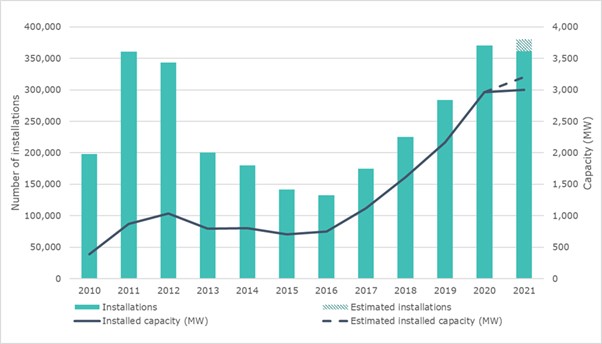
This guide will walk you through everything you need to know to install solar panels on your roof and to start harnessing the power of the sun.
The following sections will give you key insights into solar feed-in tariffs, panel sizes, inverters, and more.
TAKE ADVANTAGE OF GOVERNMENT SOLAR REBATES AND REDUCE YOUR HOME ENERGY CONSUMPTION!
Solar Power Made Affordable: Government Rebates, Zero Upfront Fees. Embrace a brighter future with solar power.
If you’ve been on the fence about adopting solar solutions, this guide will give you the confidence and knowledge to make the switch. Are you ready to start saving money and contributing to protecting the environment?
Let’s dive in. The sun is shining and your solar-powered future is calling.
The Growth of Rooftop Solar in Australia
The Australian solar industry is booming. Over 2 million Aussie homes now enjoy rooftop solar panels, and that number is growing daily. If you’re thinking of joining the solar revolution, here’s what you need to know.
1. Cost and Savings
The average upfront cost of a typical residential system is between $5,000 to $10,000.
But don’t let the price tag deter you – solar can save you thousands of dollars per year on electricity bills. Government rebates and incentives like the Small-scale Renewable Energy Scheme (SRES) can also help offset these costs.
2. Choosing a System
For most homes, a 3 to 5-kilowatt system using premium panels and an inverter is ideal. Such a system will produce 10 to 16-kilowatt hours of electricity per day, which is enough for most households.
Shop around at different installers for the best deal.
3. Installation and Maintenance
Once installed, solar systems require little maintenance. But it’s important to have a professional service your system every 3-5 years to check components and ensure optimal efficiency.
4. The Future is Bright
The future of solar in Australia looks very bright indeed. Government projections aim to have rooftop solar installations on 3.5 million homes by 2030.
Advancements in battery storage technology, smart meters, and the rise of virtual power plants will make rooftop solar solutions even more viable and valuable. The sun is shining on Australia’s renewable energy future!
How Much Do Solar Panels Cost in Australia?
The cost of solar panels in Australia has dropped significantly over the last decade, which made solar energy more affordable and accessible to homeowners.
According to the Clean Energy Council, the average price of a 5kW solar PV system in Australia is between $5,000 and $10,000. The exact price you pay will depend on several factors:
Panel type
The two most common types of solar panel types are monocrystalline and polycrystalline. Monocrystalline panels are more efficient but also more expensive, ranging between $3,000 to $5,000 for a 5kW system.
Polycrystalline panels are slightly less efficient but are more budget-friendly, ranging between $2,500 to $4,500 for a 5kW system.
System size
A larger system with a higher kW output will cost more to install but will also generate more energy and lead to higher bill savings. A 5kW system is suitable for the average home whereas a 10kW system is more suited for larger houses or small commercial spaces.
Location and installation
Installation costs are often a significant portion of the total system price. The specific design, roof type, and location of your home will determine the complexity of the installation.
Installation in remote locations will also typically cost more. You can expect to pay a price ranging from $500 to $2,000 or more for the installation of a 5kW system.
Incentives and rebates
Both federal and state incentives are available for rooftop solar solutions in Australia such as the Small-scale Renewable Energy Scheme (SRES) and various state rebate programs.
These incentives allow you to save thousands of dollars from the total cost of your solar installation. Be sure to check what rebates you may be eligible for based on the specifics of your system and location.
Top Solar Panel Brands & Installers in Australia
When it comes to residential solar panels in Australia, you have several great options to choose from. Two of the leading panel manufacturers are:
Canadian Solar: One of the largest solar companies in the world, Canadian Solar produces high-efficiency panels at affordable prices. Their panels are supplied with a 10-year product warranty and a 25-year performance warranty.
JinkoSolar: A global leader in the solar industry, JinkoSolar manufactures innovative panels that can be used on any roof. They provide panels for both residential and commercial purposes, along with competitive, performance-based warranties.
Maximizing Your Solar Energy Production
Maximizing the energy your solar panels produce means getting the most out of your investment. Here are some tips that allow you to optimize their performance:
Panel Placement
The orientation and angle of your solar panels directly impact how much sunlight they receive. For the best results in Australia, direct the panels to face north at an angle of 30-50 degrees. North-facing panels will produce 10-25% more energy than east or west-facing ones.
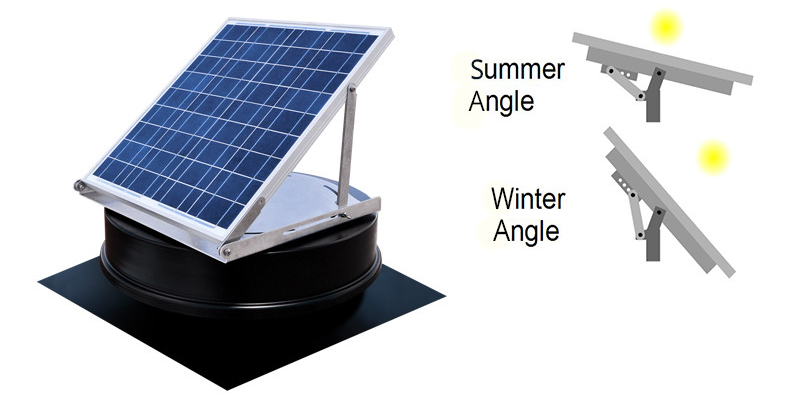
Regular Cleaning
Dirt and debris on your solar panels block sunlight and reduce the panels’ efficiency. Hire a professional to clean the panels 2-4 times a year in order to remove built-up grime.
You can also carefully wipe the panels yourself using water and a soft brush, proceeding slowly so as not to damage them. Clear, clean panels can improve energy production by up to 15% compared to dirty ones.
Monitor Your System
Check on your solar energy system regularly to ensure all the components are properly working. Look for any warning lights or alarms that could indicate issues with inverters, wiring or batteries.
Hire a professional to conduct annual maintenance checks and service calls as needed. Proactive monitoring and repairs will minimize downtime and maximize the energy generated by your panels.
Energy Efficiency
The more efficient your home energy consumption is, the less solar energy you’ll need to power it. Improve insulation, switch to LED lighting, and upgrade to Energy Star-certified appliances.
These upgrades help you to significantly reduce your energy consumption , allowing your solar panels to produce excess energy that is sent to the grid.
The feed-in tariffs you receive in return will allow you to offset your system costs faster.
Future Upgrades
As solar technology improves, the efficiency and affordability of panels is expected to increase. If your panels are more than 5-10 years old, it may be worthwhile to upgrade to newer, higher-wattage models.
Newer panels take up the same space but can generate 20-40% more energy than older panels.
This type of upgrade is an easy way to maximize your solar energy production without expanding your system size or costs.
LET’S HELP YOU CHOOSE THE RIGHT SOLAR SYSTEM FOR YOUR HOME AND BUSINESS
Solar Solutions at Zero Cost: Government Rebated Installations! Invest in Sunshine with No Upfront Costs.
Conclusion
So there you have it, everything you need to know about going solar in Australia.
Australia has some of the highest rates of rooftop solar adoption in the world thanks to government incentives, decreasing costs, and most importantly, the high solar irradiance the country receives.
Whether you want to save money, reduce your environmental footprint, gain energy independence, or all of the above, solar panels are a very attractive option.
Although the process may seem complicated, doing your research, getting multiple quotes, and asking the right questions, will set you well on your way to harnessing the power of the sun and reaping the benefits.
Go on, join the solar revolution! Your future self will thank you.
Have you have been thinking of going solar and making the switch to residential solar panels for your home?
Excellent choice! Not only are you helping protect the environment by reducing your carbon footprint, but you’ll also be saving money on your energy bills from day one.
The Australian government currently offers generous solar rebates and incentives to make the transition to solar even more affordable and worthwhile for homeowners.
According to recent surveys, over 2 million Australian households have already gone solar, taking advantage of programs like the Small-scale Renewable Energy Scheme to slash their utility costs.
TAKE ADVANTAGE OF GOVERNMENT SOLAR REBATES AND REDUCE YOUR HOME ENERGY CONSUMPTION!
Solar Power Made Affordable: Government Rebates, Zero Upfront Fees. Embrace a brighter future with solar power.
If you haven’t considered solar for your home yet, you’re missing out on significant savings.
Read on to learn how affordable and accessible solar has become, even if you have little technical know-how. The benefits of solar are huge, and now is the perfect time to make the switch.
The Financial Benefits of Installing Solar Panels in Australia
As soon as you make the switch to residential solar panels in Australia, you’ll start reaping the financial benefits.
First, you’ll save big on electricity bills. According to Energy Rating, the average Aussie household can save $200 to $600 per quarter after installing a 5kW solar system.
The more you use, the more you save. Over the lifetime of a solar system, households can save tens of thousands of dollars in energy costs.
You’ll also get money back through the Small-scale Renewable Energy Scheme (SRES).
For every megawatt-hour of renewable electricity generated, you receive Small-scale Technology Certificates (STCs) which you can sell to energy retailers for cash. At current STC prices, a standard system could earn you over $3,000.
Several states and territories offer their own solar rebates and incentives on top of the federal SRES rebate. Depending on where you live, you may be eligible for up to $10,000 in rebates when you go solar.
In addition, once your system is installed, your home will instantly increase in value. On average, a home with solar panels sells for about 5% more than a similar home without panels.
When it’s time to sell, you’ll recoup much of the initial investment in your solar system.
Federal and State Solar Rebates and Incentives in Australia
If you live in Australia, switching to residential solar panels can help you save considerably on utility bills. Even better, the Australian government offers generous solar rebates and incentives to make going solar affordable.
The federal government’s Small-Scale Renewable Energy Scheme (SRES) offers upfront rebates on solar panels and solar hot water systems.
As of 2021, the rebate is worth up to $1,800 for solar panel systems. Many states also offer their own solar rebates, like the Solar Victoria Program which provides up to $1,888 back.
The government also runs the Solar Loan Program which provides low-interest loans to help homeowners finance their solar installation with no upfront costs. Loans are repaid over time through the energy bill savings from your new solar system.
Some power companies offer additional solar feed-in tariffs, which means they’ll pay you for any excess solar energy you export to the grid. Rates vary but can be as high as $0.66 per kWh. Over the lifetime of a system, feed-in tariffs can add up to thousands in extra savings.
By combining federal rebates, state incentives, low-interest loans, and feed-in tariffs, you can slash the cost of going solar by 50% or more.
And once your system is installed, you’ll enjoy lower energy bills for decades to come. For environmentally conscious homeowners, residential solar is a win-win.
Environmental Benefits of Going Solar for Your Home
Going solar for your home has many environmental benefits. By harnessing the sun’s energy, you’ll be reducing your carbon footprint and doing your part to fight climate change.
Lower Carbon Emissions
The average Australian home produces around 6 tons of carbon dioxide each year from electricity usage alone. By switching to solar, you can cut those emissions by up to 4 tons per year for a typical household.
That’s equivalent to not driving your car for 6 months! Every kilowatt of electricity generated by your solar panels means less coal and gas burned at power stations.
Renewable Energy Independence
With your own solar power system, you’ll gain energy independence from the main grid. The sun’s rays are free and unlimited, so you’ll have a constant source of renewable energy for your home.
Any excess solar power you generate can be exported to the grid for others to use.
Cost Savings
While solar systems have considerable upfront costs, government rebates and incentives can help make the switch more affordable. Feed-in tariffs allow you to earn money by exporting excess solar power to the grid.
And once your system is paid off, the electricity it generates is virtually free. Most solar households in Australia can save $1000 or more per year on their electricity bills.
How to Choose the Right Solar Panel System for Your Home
Choosing the right solar system for your home is an important decision. There are several factors to consider in order to find one that will suit your needs and budget.
Size Of Your System
The size of your solar panel system, measured in kilowatts (kW), depends on your average energy usage and available roof space.
For a typical Australian home, a 3kW to 8kW system should cover most of your needs. The larger your system, the more energy it will produce, but the higher the upfront cost.
Make sure your roof has enough space for the panels and consider getting a smaller system now that you can expand in the future.
Type Of Panels
The two most common types of solar panels are crystalline silicon panels and thin-film panels. Crystalline silicon panels are the most efficient and space-efficient but tend to cost more.
Thin-film panels are cheaper but require more space to produce the same energy. For residential use, crystalline silicon panels are typically the better option.
Additional Equipment
In addition to the panels, you’ll need an inverter to convert the direct current (DC) power from the panels to alternating current (AC) for use in your home.
You may also want a battery system to store excess energy for use when your panels aren’t producing power. Batteries allow you to maximize your solar savings but at a higher upfront cost.
LET’S HELP YOU CHOOSE THE RIGHT SOLAR SYSTEM FOR YOUR HOME AND BUSINESS
Solar Solutions at Zero Cost: Government Rebated Installations! Invest in Sunshine with No Upfront Costs.
Conclusion
There you have it, switching to residential solar panels in Australia can provide so many benefits, both financial and environmental. With generous government rebates and incentive schemes, it’s more affordable than ever.
You’ll gain energy independence, lower your power bills, and do your part in Australia’s transition to renewable energy. The sun is shining, the technology is there – all you need to do is just make the switch, so go solar and start soaking in the sun.
So you’re thinking of installing solar panels and wondering if they will still generate power when the sun isn’t shining.
After all, if solar panels don’t work on cloudy days, that could put a real damper on your energy independence.
The good news is that solar panels do work even when the sun is obscured by clouds. However, they operate at a lower efficiency since fewer photons from the sun hit the panels.
Solar panels contain photovoltaic cells that convert sunlight into electricity through a process called the photovoltaic effect. When photons of light strike the cells, they knock electrons free from their atoms, creating a flow of electricity.
On sunny days, solar panels perform at peak efficiency because more photons are reaching the surface. On the other hand, on cloudy days, fewer photons penetrate the clouds, so less electricity is produced.
However, solar panels can still generate a fair amount of power from the diffuse light that crosses the clouds.
TAKE ADVANTAGE OF GOVERNMENT SOLAR REBATES AND REDUCE YOUR HOME ENERGY CONSUMPTION!
Solar Power Made Affordable: Government Rebates, Zero Upfront Fees. Embrace a brighter future with solar power.
The actual output will depend on the density and type of clouds, but you can still expect an output between 10-25% of the maximum power on an average cloudy day.
So while solar panels are most efficient in direct sunlight, they can absolutely work and produce power even when the sun is obscured behind a blanket of clouds.
Going solar means having an energy source you can depend on, rain or shine. The sun may be hidden, but its power is still reaching your panels.
How Solar Panels Convert Sunlight Into Electricity
Solar panels work by converting sunlight into electricity using the photovoltaic effect.
As photons of light strike the solar cells in the panels, they knock electrons loose from their atoms which frees the electrons to flow through the cell, creating an electric current.
More light hitting the panels means more electricity produced. So while solar panels do work on cloudy days, they are most efficient in direct sunlight.
During cloudy days, solar panels can still generate electricity, but at a reduced output. The amount of power produced depends on the intensity of light and the time available.
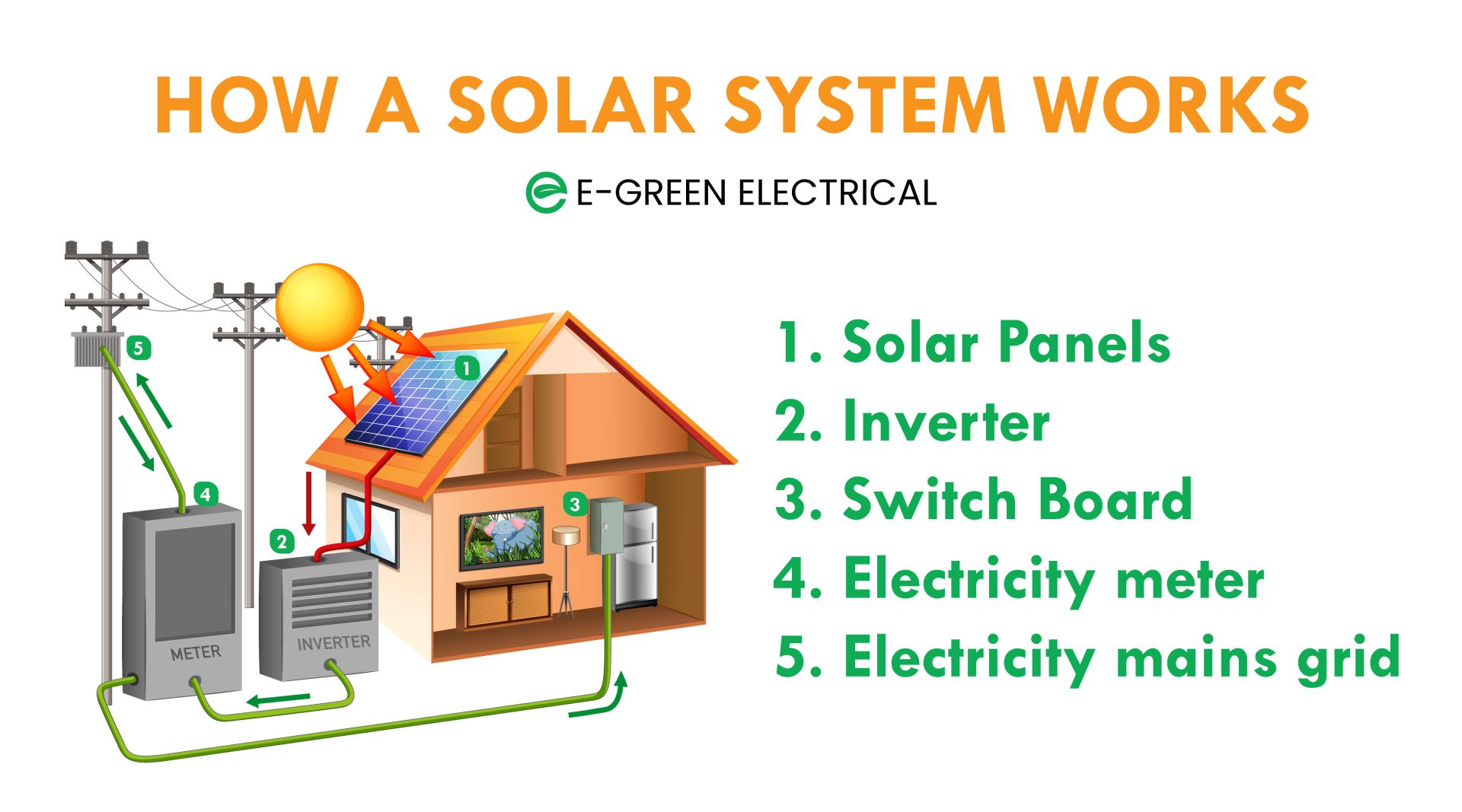
The Impact of Diffused Sunlight and Solar Irradiance on Power Output
Even on cloudy or overcast days, solar panels can still generate power, just not as much as on sunny days. Here’s why.
Solar panels work by absorbing sunlight and converting it into electricity through the photovoltaic effect. They operate based on the solar irradiance, which is the amount of sunlight energy that reaches a given area, which is measured in watts per square meter (W/m2).
On sunny days, depending on the area, solar irradiance can be 1000 W/m2 or higher, which means more available energy for your panels to convert into electricity.
On cloudy days, the sunlight is diffused by the clouds, so less irradiance reaches your panels, close to 200-500 W/m2 are common, resulting in lower power output.
However, as long as some irradiance reaches the panels, your solar panels will produce power. The actual output depends on factors like:
- The density and type of clouds. Thin, high clouds have less impact than thick, low-lying clouds.
- The panel’s efficiency rating. More efficient panels can generate more power from less irradiance.
- The inverter’s performance. A high-quality inverter helps ensure maximum power output in low-light conditions.
- Panel orientation. Panels facing the sun directly collect the most irradiance and produce the highest output, even on cloudy days.
Inverter Technology and Energy Storage Enable Solar Panels to Work Even on Cloudy Days
Solar panel systems can still generate electricity even on cloudy or overcast days, thanks to advancements in inverter technology and energy storage.
Inverters Convert DC to AC
The solar panels themselves produce DC (direct current) electricity, but our homes and electrical grids use AC (alternating current) power. Inverters are used to convert the DC power into AC so you can use the energy from your solar panels.
Also read; What is a Solar Power Calculator
Modern inverters are very efficient at converting DC to AC, even when the sun isn’t shining brightly. They can work with the minimal energy production on cloudy days and convert it to usable AC power for your home.
Batteries Store Extra Energy
Many homeowners also install battery storage units to complement their solar panel system.
These large battery banks store extra energy produced by the panels on sunny days so you can use it when the sun isn’t out. The batteries ensure a power supply to your home using the stored solar energy.
Some solar panel systems can recharge the batteries on overcast days when there is still some limited power generation. The batteries ensure you always have access to renewable, sustainable energy, even at night or during storms.
Maximum Power Point Tracking
Inverters also use maximum power point tracking (MPPT) to get the most power possible from the panels under all weather conditions. MPPT is technology built into the inverter that helps solar panels operate at their highest efficiency.
It can detect the maximum power the panels can produce at any given point in time based on factors like temperature, sunlight intensity, and cloud cover.
The inverter then draws the maximum available power from the panels to charge batteries or to power your home. MPPT allows you to take full advantage of your solar panels on cloudy and rainy days.
Do Solar Panels Work on Cloudy Days – The Takeaway
So while solar panels will produce less energy on cloudy or overcast days compared to sunny days, they can still generate power as long as some light gets through.
The solar cells don’t need direct sunlight to operate, they will be able to operate on diffuse light from the sky and clouds.
As solar panel technology improves, their efficiency in low and indirect light conditions is increasing. For most residential setups, solar panels are capable of meeting a good portion of your energy needs even on cloudy days.
If you have energy storage systems like batteries, the excess power generated on sunny days can help supplement your power needs on cloudy ones.
the weather can’t be controlled, solar panels and a solid energy plan can help ensure you maximize the benefits of your system no matter the forecast.
LET’S HELP YOU CHOOSE THE RIGHT SOLAR SYSTEM FOR YOUR HOME AND BUSINESS
Solar Solutions at Zero Cost: Government Rebated Installations! Invest in Sunshine with No Upfront Costs.
Ever wondered if those shiny new solar panels you’re considering installing on your roof might make weird noises?
You might have heard rumors that solar equipment like inverters can buzz, hum or click, and you’ll want to get to the bottom of that before you shell out thousands of dollars on them.
Will your new solar system transform your home into a symphony of strange noises, or can you install it with confidence that you will continue to enjoy peace and quiet?
Also read; Do Solar Panels Work on Cloudy Days?
The good news is modern solar panels themselves don’t make much noise. They have no moving parts and just convert sunlight into energy.
TAKE ADVANTAGE OF GOVERNMENT SOLAR REBATES AND REDUCE YOUR HOME ENERGY CONSUMPTION!
Solar Power Made Affordable: Government Rebates, Zero Upfront Fees. Embrace a brighter future with solar power.
However, solar inverters, the devices that convert the DC power from the panels into usable AC power for your home, can emit some noise.
The level of noise depends on the specific equipment and installation, but in most cases, it’s minimal.
Here’s what you need to know about noise that might be emitted by solar panels and inverters, and how to minimize it so you can enjoy the benefits of going solar without any inconvenience.
Do Solar Panels Make Noise?
When installed properly, solar panels themselves shouldn’t make any noise.
They simply absorb sunlight and convert it to energy. The solar components that might generate sound are the inverters, which convert the DC power generated by the panels into AC power for your home.
Inverters typically have cooling fans that run when the inverter is operating to prevent overheating. These fans can produce a low humming sound.
Newer inverters are designed to minimize noise, but you may still notice a faint buzzing coming from the inverter, especially on very hot days.
Do Solar Inverters Make Noise?
Inverters are needed to convert the DC power generated by solar panels into AC power that can be used in your home.
As the inverter is actively working to convert energy, it does emit some noise. However, for most people the noise produced by a solar inverter is minimal and not disruptive.
In general, the level of noise from a solar inverter depends on the following:
- The type of inverter: String inverters, which connect multiple panels, can produce more noise from their larger fans. String inverters convert energy from multiple solar panels at once, so they have larger components that can hum or buzz and they tend to be a bit louder than microinverters. Microinverters, which are small inverters attached to each panel, handle energy conversion for individual panels, so they have smaller components that are quieter.
- The inverter’s power rating: More powerful inverters that can handle more solar panels will have larger components that often generate more noise. Inverters for small to mid-size residential systems should not produce much noise.
- The inverter’s location: The place where the inverter is installed impacts how noisy it sounds. Installing the solar inverter in a location far from the residential area, such as a garage or garden can reduce the perception of noise. The surrounding area and any insulation can also amplify or muffle the inverter noise, where placing sound dampening materials like insulation around the inverter can help muffle any noises.
- Fan operation: Many inverters have built-in fans that only run when needed to cool the components. The fans can increase the noise level temporarily while operating.
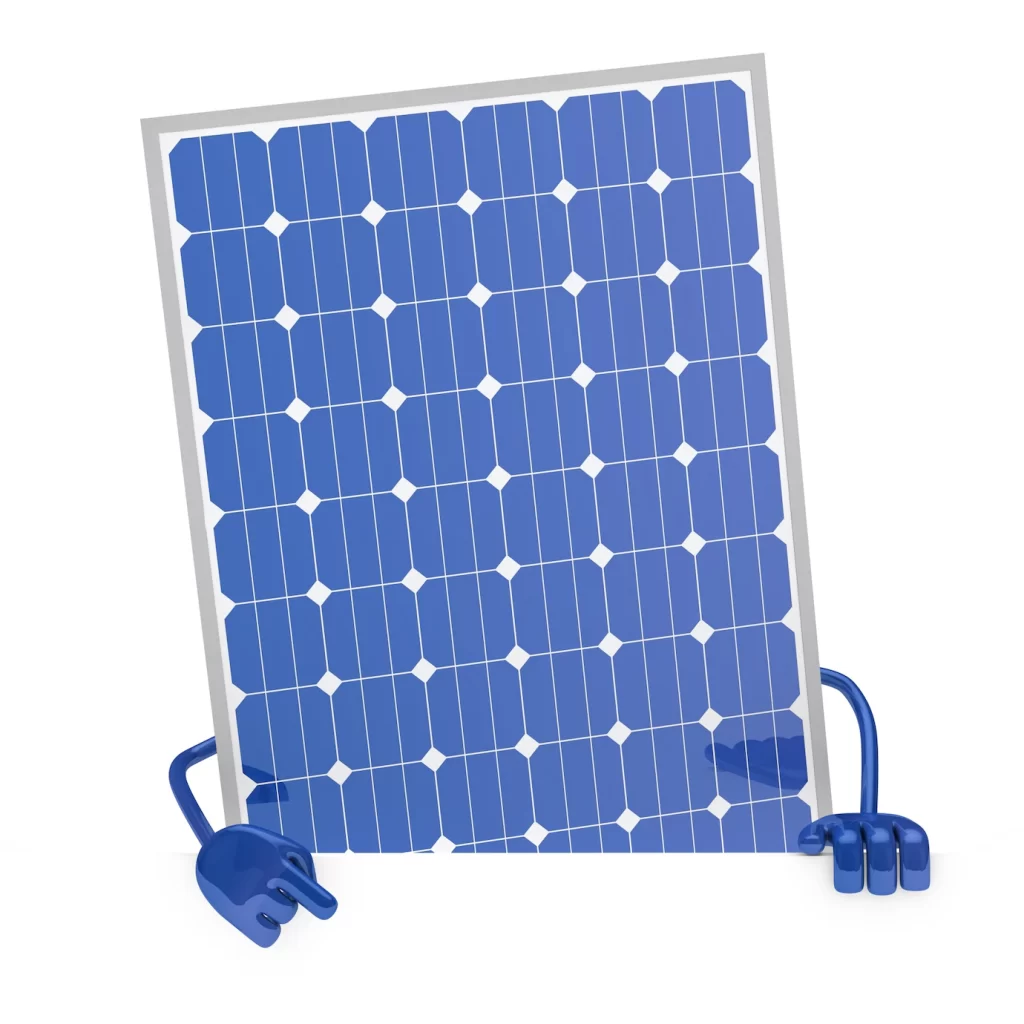
Tips for Reducing Noise Emitted by Your Solar System
Solar panels and inverters are designed to operate quietly, but some noise is inevitable. Here are some tips to help reduce noise from your solar system:
Locate Components Strategically
Place solar panels, inverters, and batteries as far as possible from living areas like bedrooms. The farther away the components are, the less noticeable any noise will be. If possible, install them in a garage, shed, or utility room.
Choose High-quality Noise-optimized Equipment
Higher quality solar equipment is built to minimize noise. Look for components specifically designed to reduce buzzing, humming and clicking sounds. Choosing premium, noise-optimized inverters and microinverters can make a big difference.
Also read; What is a Solar Power Calculator
Ensure Proper Grounding and Bonding
Incorrect grounding and bonding are a common cause of excess noise from solar systems.
Proper grounding provides a path for stray electrical current to flow to the ground, reducing buzzing and humming.
Bonding connects components like panels, racks, and inverters to prevent current flow between them. Have an electrician inspect your system to ensure all components are properly grounded and bonded.
Add Soundproofing
For existing systems where noise is an issue, adding soundproofing materials like insulation, acoustic panels or barriers can help muffle the sounds.
Place soundproofing directly on or around the noisy components. Weather-resistant, fire-rated materials should be used for components installed outdoors or in hot areas like attics.
Maintain your System
Over time, loose or corroded connections can lead to increased buzzing, humming or clicking noises. Perform regular inspections of your entire solar system, especially after extreme weather events.
Look for any loose wiring or connections and tighten or replace as needed. Well-maintained solar equipment will operate more quietly and efficiently.
Conclusion
While solar panels themselves are silent, inverters are the solar components that can create some noise. The good news is that technology and design have improved a lot, and modern inverters are very quiet.
Noise from a properly installed solar system should be negligible and not discernable for most people.
At the end of the day, the benefits of solar energy far outweigh any minor noise concerns for most homes and businesses.
If noise is a serious issue for you, be upfront with your solar installer about your needs and concerns.
They should be able to recommend equipment and an installation plan to keep things as quiet as possible so you can enjoy the rewards of lower energy bills and a greener footprint in peace.
LET’S HELP YOU CHOOSE THE RIGHT SOLAR SYSTEM FOR YOUR HOME AND BUSINESS
Solar Solutions at Zero Cost: Government Rebated Installations! Invest in Sunshine with No Upfront Costs.
